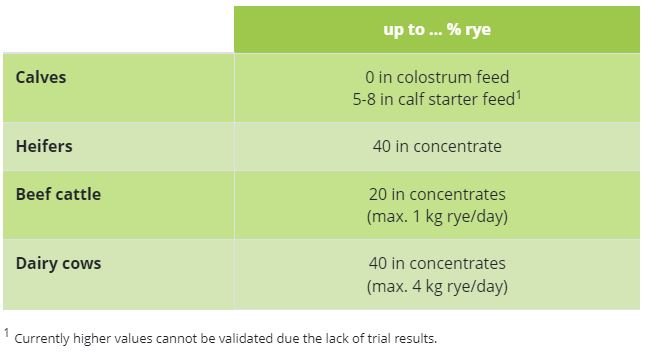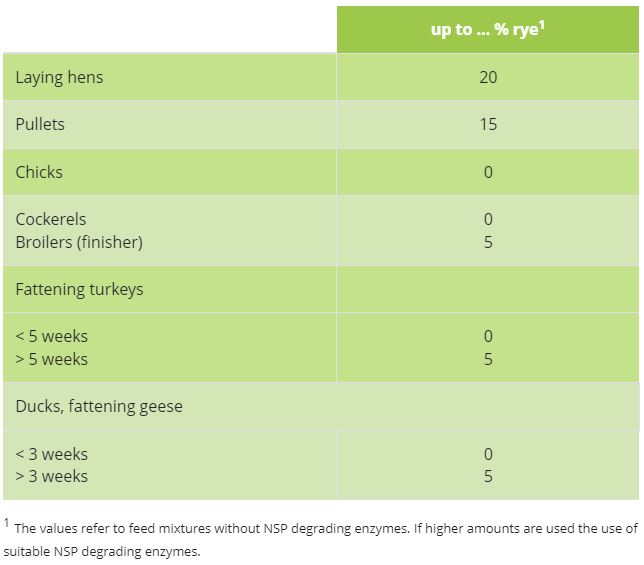Rye as animal feed
A degree of reluctance seems to persist towards a high rye ratio in the diet. Older observations report that higher proportions of rye in the feed ration leads to a decrease in feed intake, joint ill and a change in faeces consistency. Today, numerous trial results have shown that this reluctance is unreasonable because, among other things, breeding has achieved that bitterness plays a minor role in today‘s varieties.
However, two limiting factors in rye cannot be denied. One is the high proportion of non-starch polysaccharides (NSP) which are difficult to digest and the other is the susceptibility to infection with the ergot fungus Claviceps purpurea. Thresholds for ergot and mycotoxins are considered in regard to using rye in human as well as in animal nutrition in order to control toxicity risks. It is prohibited to exceed the statutory maximum level of 1 g per kg of cereal grain. Compared to wheat and barley rye has significantly lower levels of the Fusarium toxins deoxynivalenol and zearalenone. Having taken these limiting factors into account the DLG (German Agriculture Society) issued recommendations on the use of rye in the year 2006 (see tables).
Feeding Pigs
up to ... % rye within feeding ration
Fattening pigs 1
28 - 40 kg LW (pre-grower)
30
40 - 60 kg LW (grower)
40
60 - 90 kg LW (pre-finisher)
50
> 90 kg LW (finisher)
50
Sows
25
Farrows
up to 15 kg LW
10
from 15 kg LW
20

Feeding Cattle
up to ... % rye
Calves <
0 in colostrum feed
5-8 in calf starter feed1
Heifers
40 in concentrate
Beef cattle <
20 in concentrates
(max. 1 kg rye/day)
Dairy cows <
40 in concentrates
(max. 4 kg rye/day)

Feeding Poultry
up to ... % rye1
Laying hens
20
Pullets
15
Chicks
0
Cockerels
Broilers (finisher)
0
5
Fattening turkeys
< 5 weeks
> 5 weeks
0
5
Ducks, fattening geese
< 3 weeks
> 3 weeks
0
5
1 Die Werte beziehen sich auf Futtermischungen ohne NSP-spaltende Enzyme. Bei höheren Mengen ist der Einsatz geeigneter NSP-spaltender Enzyme erforderlich

An increasing rye use beyond the DLG recommendations has clearly been noticeable again for some time past. New results have shown that specific components of the rye’s NSP fractions have to be reevaluated. Just as in human nutrition these also have significant positive effects on intestinal health in pigs. Thus, rye is an ideal fibrous component of the feed ration which has a higher dietary fibre and fructan content than any other cereal providing more satiety and well-being in the pig (see “Advantages in feeding”). Besides animal welfare aspects rye can also help to save feeding costs and to reduce nitrogen inputs into the environment (see “Projects: UK Feeding Project”).
